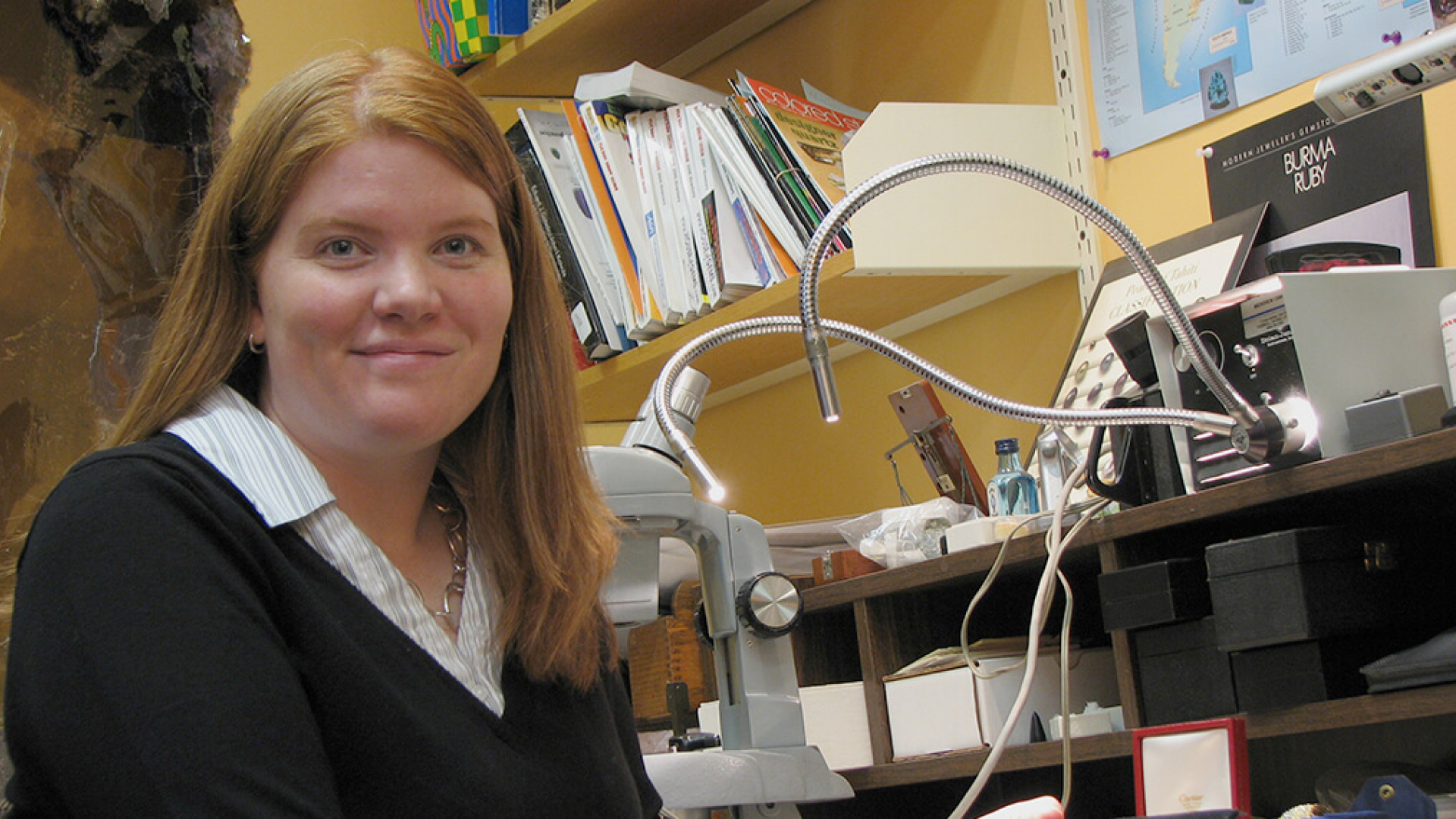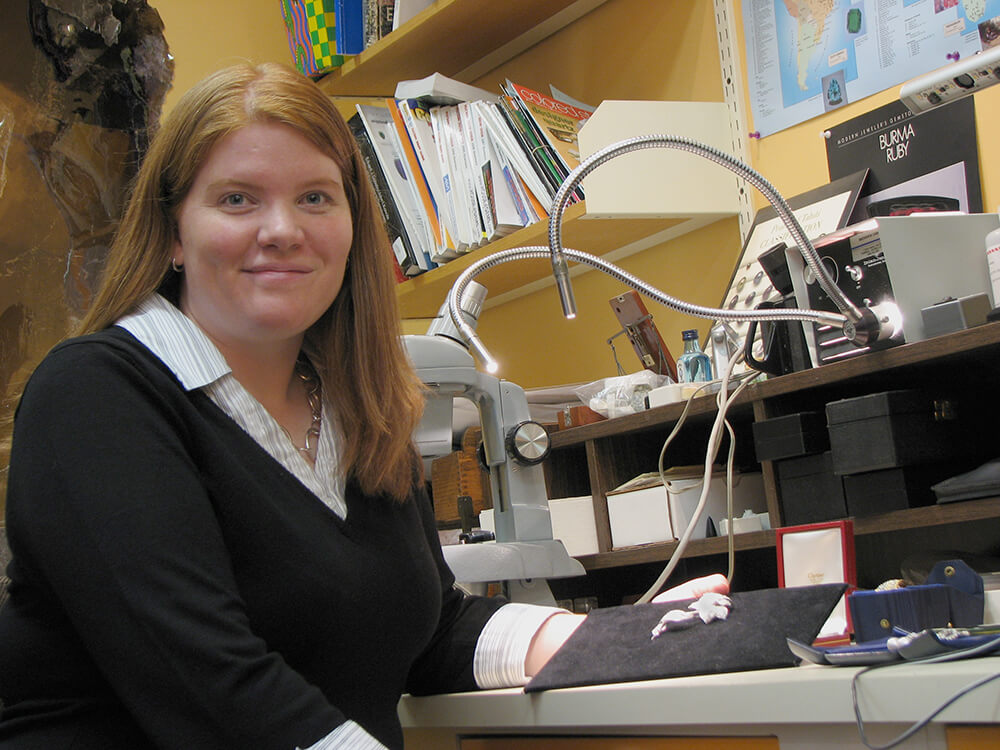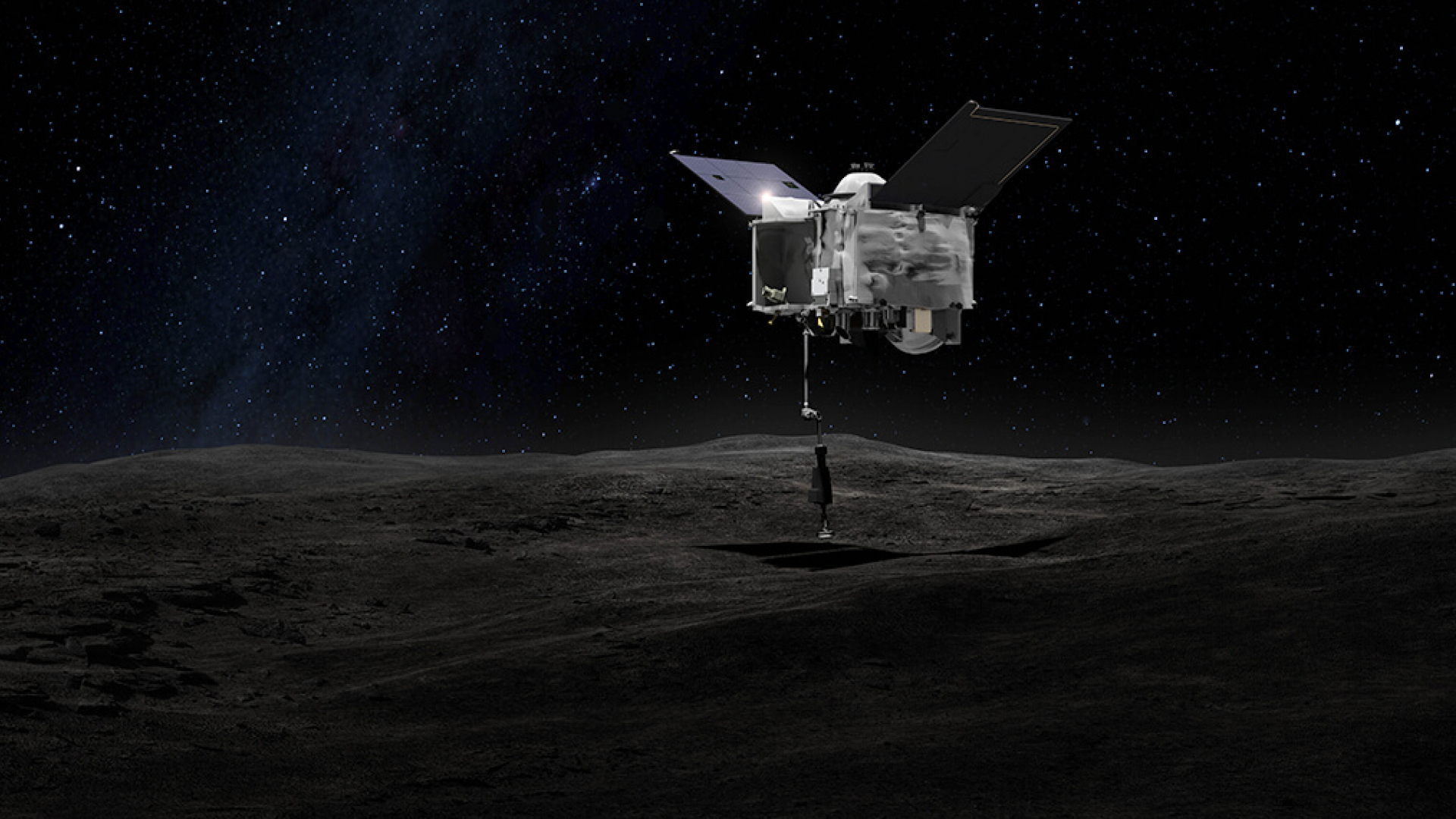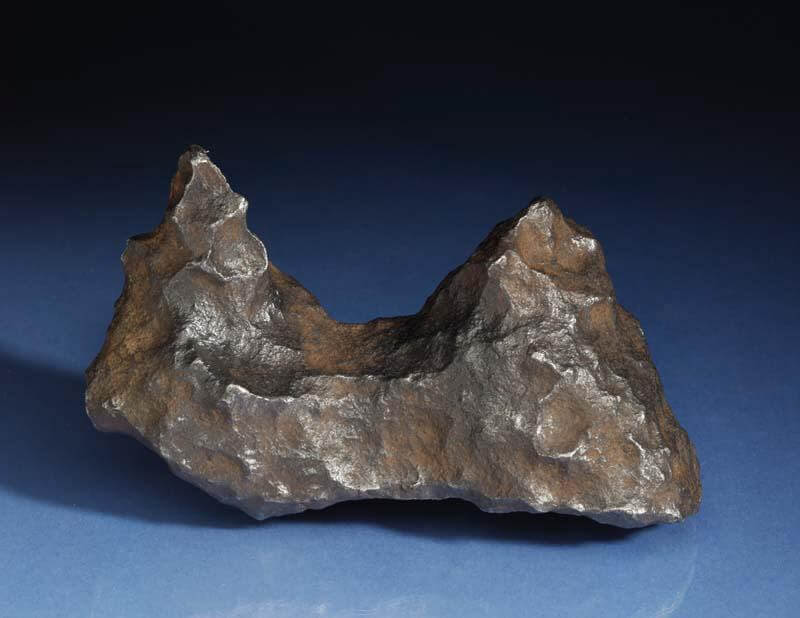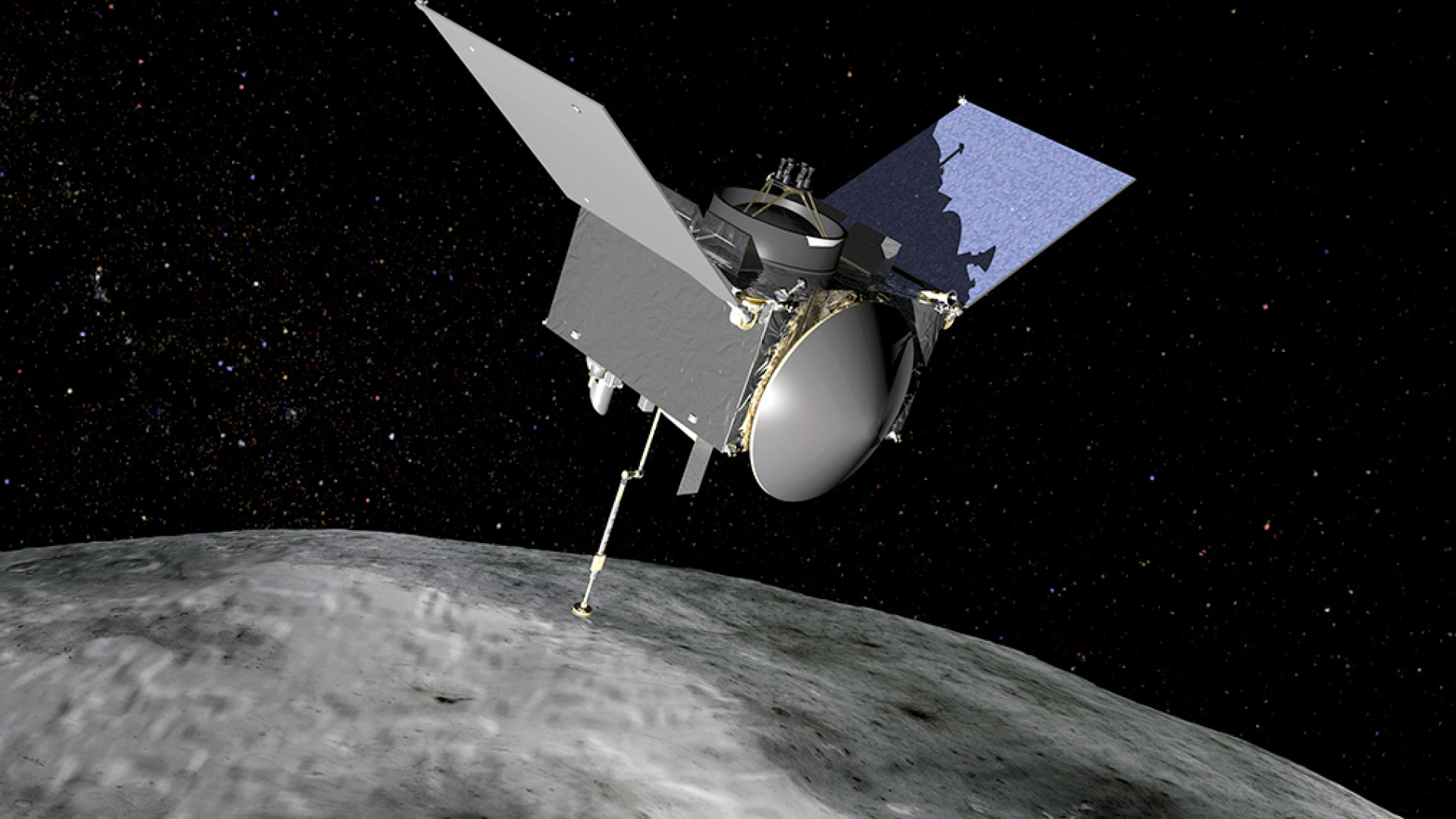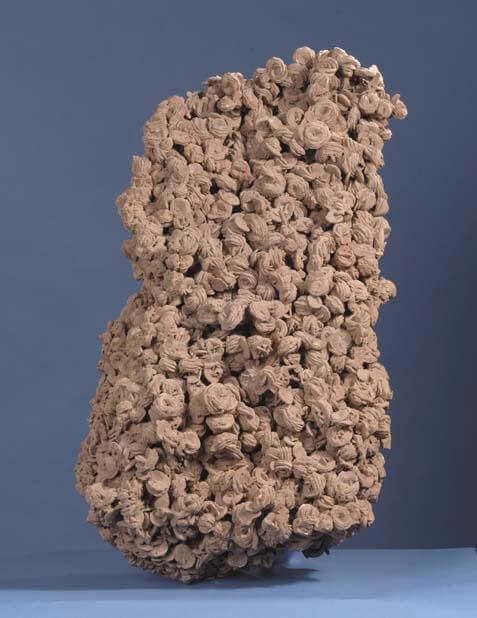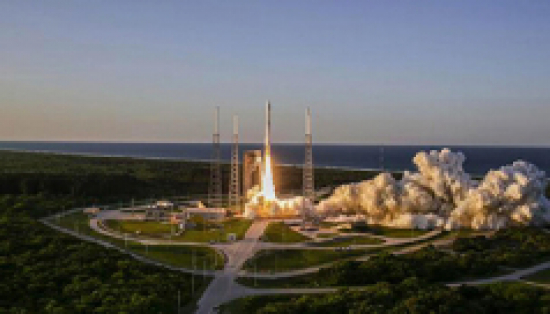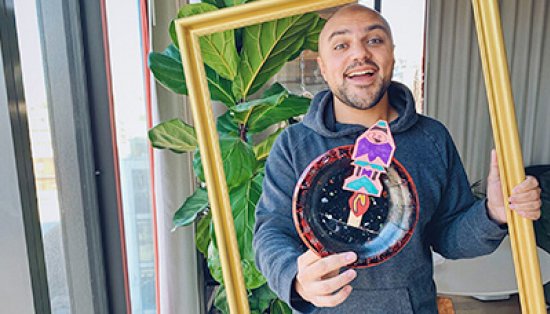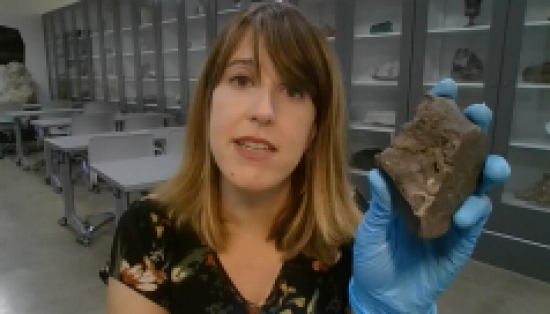Every Thursday at 10 am on Instagram we chat with a different ROM expert ready to answer your burning questions on a different subject. This week we’re talking to Kim Tait, the Senior Curator and Teck Endowed Chair of Mineralogy here at the ROM.
In addition to her role at the museum, Kim is also a collaborator on the Canadian Space Agency’s OSIRIS-REx Laser Altimeter (OLA) team, which is part of a multinational mission lead by NASA to study the near-earth asteroid Bennu. The main goal of the mission is to obtain a sample from Bennu and return it to earth for scientific study.
The OSIRIS-REx mission was launched four years ago on September 8, 2016. Since the arrival at the Bennu asteroid in 2018 the team has been engaged in an analysis of the asteroid’s surface including a search for an ideal sample site. On Tuesday October 20th, 2020 the team completed its sample collection “Touch and Go” maneuver. OSIRIS-REx will soon begin its long return trip home!
Q. Are you a teacher or a scientist? What is your favourite part of your job?
A. I am both, which is probably the best combination. I’m an Associate Professor at the University of Toronto and a researcher/scientist, so I get to study the samples in the ROM’s collections and write scientific manuscripts. I also get to supervise students, so guiding them in their own research interests too. I like a lot of aspects of my job, but I really love when I receive a call when someone wants to donate something to the museum, those are exciting days!
Q. What do you wear for studying rocks? Do you wear a lab coat?
A. Depends what type of study I’m doing. A lot of my work I just wear everyday clothes, but if I’m going to get dirty or need to protect myself (using acids for example) I will wear a lab coat and protective eye wear. I wear a dosimeter, which is a small device that measures how much radiation I’m exposed to) if I’m in an area with radiation which some rocks produce, as well as the instruments we use to measure them.
Q. Does studying asteroids help understand materials on earth in a different way?
A. Asteroids are small rocky bodies that orbit our sun, many are largely unchanged since the beginning of the solar system formation. Our Earth is very dynamic, its constantly changing which allows our planet to host life, but for us to study the very beginning of how the Earth formed is very difficult with Earth rocks. A lot of that information has been lost on Earth. So, we look to asteroids, many that are from the beginning of the solar system and haven’t been changed at all, sort of “frozen in time” so to speak, to understand a lot of the early solar system processes. Every rock tells a story, and these rocks from asteroids tell us a very old story, one from the very beginning which will help us understand what was happening when our planet formed.
Q. How does the sample collection work?
A. The Touch and Go (TAG) collection process happened this week, and from all accounts so far it was a success. There is a sampling arm on the space craft that contacted the surface of Bennu for about five seconds, where it released a burst of nitrogen gas. The procedure will cause rocks and dust to be stirred up and captured in the sampler head and is attempting to collect between 60 to 2000 grams of material. We’ll know in the next few weeks if it was able to do so, if not it has two more attempts to collect more material if needed.
Q. Is an asteroid a piece of earth/rock?
A. Asteroids are small rocky bodies that orbit the sun. They can range in size from pebble-sized to hundreds of miles in diameter. They are made up of rock but can vary in what type of rock it is, some of them are like Earth rocks, some of them are made up of iron, or clays, which makes studying them exciting.
Q. Can you explain the touch and go process a little more?
A. Hopefully everyone has been seeing the awesome images that are emerging over the last few days, if not please go to the NASA OSIRIS-REx website to see them! The sampling arm slowly descended to the surface of Bennu, at a sight called Nightingale, touching down within one metre of the targeted location. The sampling head is about 0.3 metres wide, and touched the surface for about 6 seconds, after which the spacecraft performed a back-away burn. There are a series of images that show this contact with the asteroid, and the nitrogen gas was discharged as planned.
Q. How can we deter asteroids that might be on a collision course with Earth? How realistic is the movie Armageddon?
A. As much as I love the idea of Bruce Willis and Ben Affleck saving Earth by drilling into the surface of an asteroid and setting off a nuclear weapon—that’s a bit unlikely as to how an asteroid that’s on a collision course will be handled! How to divert an asteroid from its impact course with Earth is scenario-dependent, depending on its composition, bulk properties, and relative velocity as well as the probability of impact and the predicted impact location. Bennu is a potentially hazardous asteroid (PHA). A PHA is an asteroid whose orbit is predicted to bring it within 0.05 Astronomical Units (just under 8 million kilometres) of Earth’s orbit; and a size that is large enough to reach Earth’s surface, meaning that its unlikely to burn up on entry into our atmosphere. There is a bit of uncertainty in predicting Bennu’s orbital motion more than a century from now, so observations of Bennu from the OSIRIS-REx mission will help experts update orbit predictions and revise the future impact probabilities of Bennu, and other PHAs.
Q. What are you hoping to find in space?
A. I’m really interested in studying rocks, to help understand how the planets formed, and how they have evolved over time. The rocks that will be recovered from the OSIRIS-REx mission will be extremely old, 4.5 billion years old formed within the first 10 million years of our Solar System’s history and have really remained the same throughout time. This gives us a unique opportunity to study rocks from the very early Solar System, which helps us understand how our own planet formed. All Earth life forms are based on chains of carbon atoms bonded with oxygen, hydrogen, nitrogen and other elements. Bennu is thought to have a lot of these elements, and although unlikely to harbour life, it will certainly further scientists’ search to uncover the role asteroids rich in organics played in catalyzing life on Earth.
Q. When we see results from the Bennu sample mission?
A. Assuming that the TAG was successfully and there are lots of material in the sample container, it will be making its way back to Earth and land September 24, 2023. Once that happens, the material will be transported to Johnson Space Centre to something called “Basic Characterization”, basic inspect all the samples with a microscope and weigh them to get a catalogue of materials. After that, there will be a split of the material, with 4% coming to Canada! I don’t know if there is a timeline established yet of how long that will take (likely will come after we know how much material there is) but then the scientists need to access the samples and get analyzing them. I would expect some results late 2024-early 2025.
Q: Do you live at the museum? (Note: question is from a 1st grade class.)
A: Some days it feels like it! But no, I live in a house in Oakville, I take the train into Toronto (before COVID) each day. Now I’m working at home, so I can help my five kids with their schooling and to reduce exposure commuting.
Q: Do the rocks you study help us make better roads in Toronto? (Note: question from the 1st grade class.)
A: Roads are typically made of asphalt. Asphalt is a residue, or the stuff left over, from oil and gas production. So, in fact, roads are made from Earth materials. I don’t personally study these types of rocks, but I certainly learned about them in school. The types of rocks I study aren’t typically used for roads, but sometimes can be used for floors, countertops and building stone.
Q: Where is Bennu located? Is it heading somewhere?
A: Bennu is orbiting the sun, just like Earth is. The closest asteroids to Earth are called a Near Earth Object (NEO)’s. When selected in 2008, there were over 7,000 known NEO’s but only about 192 that were in a suitable orbit around the sun for sample return. Bennu completed an orbit around the Sun every 436.604 days (1.2 Earth years) and every 6 years comes very close to Earth, within 0.002 AU. These close encounters give Bennu a “non-zero chance” of impacting Earth in the late 22nd century, which makes it a great target to study.
Q: Are there any minerals you expect to find on asteroids that aren’t found here on earth?
A: Many minerals that are found on asteroids are very similar to Earth rocks. In some ways the minerals in asteroids are simpler that Earth rocks, because they haven’t been exposed to our atmosphere and hydrosphere! Some asteroids are made up of iron-nickel metal, which is thought to be what our Earth’s core is like. So, these are likely from planetesimals that have been ripped apart sometime in the history of the Solar System, which is neat. Sometimes when asteroids are hit, they form high-pressure, high-temperature minerals that we don’t find on the Earth’s surface but might form deep within our Earth. We learn a lot about our own planet from asteroids!

